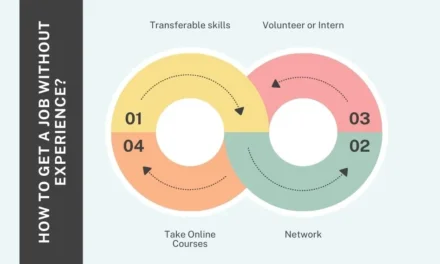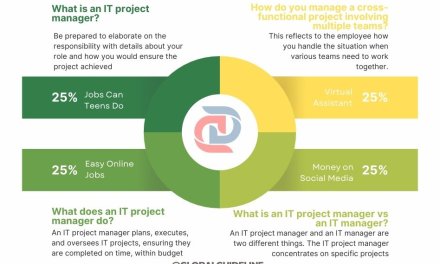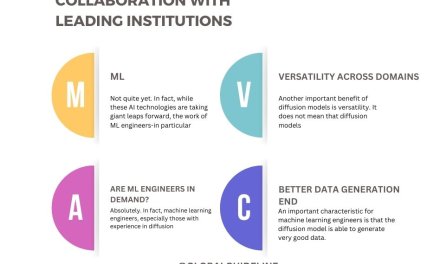The concept of the “skill tree” is very well known in video games: structured development of abilities and competencies, which allows players to develop their characters by making strategic choices. But how to take this concept of the skill tree and apply it in your life? Number of ways to demonstrate your skill tree is by mapping out your skills and experiences visually, showing how they interconnect and build upon each other. How will you effectively communicate such a diverse set of skills to employers, colleagues, or prospective clients?
This blog explores seven ways of showing your skill tree in real life, presenting actionable strategies through which one can show and prove their skills in both professional and personal life. Whether it is to help advance in a career, switch industries, or simply provide a more organized approach to personal growth, these methods will give life to your skill tree.
Table of Contents

1. Create a Visual Skill Tree
Creating a Real-Life Skill Tree
One of the most innovative ways to show and represent your skill tree is graphically. In fact, a visual skill tree, similar to what you see in RPGs or Role-Playing Games, could be a great device to use when mapping your skills, competencies, and the lack thereof.
Creating a Skill Tree Using a Template
Start by creating an outline for your skills using either a skill tree template or a skill tree maker tool. For instance, you can categorize your skills as soft skills, technical skills, leadership, and creativity. Each bigger branch may represent one area of skill, while sub-branches detail specific abilities in each category.
Not only does this give a clear view of how all your skills fit into place, but it also helps others know at first glance exactly how deep and wide their skill set is. You can use the help of a game skill tree maker or even something as less glorified as a mind-mapping tool in order to design your personal skill tree.
Example of a Personal Skill Tree
For instance, an IT specialist would have some sort of skill tree with branches for coding languages, project management, cybersecurity, and even communication skills. In each sub-branch, one can put the names of particular skills-like Python programming or Agile methodologies-and also enumerate a certain “skill point” showing the proficiency level.
Why a Visual Skill Tree Works
Especially helpful it is in situations when one needs to show clearly and concisely his or her skills, like during an interview or performance review. Visual skill tree-the categorized way to prove your skills-may serve as an ‘elevator pitch’ for you, being able to describe how you have developed those skills over time.
2. Make an Extensive Portfolio
How Would You Prove Your Skills?
A portfolio is an excellent way of showcasing just that-a skill tree-applied in the field for creative workers, IT professionals, and all those whose work involves projects of one kind or another. Your portfolio will need to make a firm statement about your best work being able to enumerate the skills you used in completing each one of your projects and provide evidence for the said claims.
How to Demonstrate IT Skills Through a Portfolio
For IT professionals, this may include examples of coding projects, software developed, or case studies of complex problems solved. For creatives, it could be a collection of designs, articles, videos, or other forms of content that best showcase their range of abilities.
Building Skills Through Portfolio Work
Each project that you include in your portfolio needs to be attached to certain skill points on your skill tree to show not only the final result of the work but also your process and the skills required to achieve it. This shows not only a display of your technical capabilities but also your problem-solving, time management, and critical thinking skills.
Digital vs. Physical Portfolio
While a digital one is hosted, either on a personal website or platforms like GitHub or Behance, it is far more accessible and much easier to update; having a physical one at real-life meetings can also be impressive in engaging you directly with your audience.
3. Utilize Social Media and Online Platforms
Kooky Ways to Represent Your Skill Tree Online
In this digital century, social media platforms such as LinkedIn, Twitter, and personal blogs are some of the best tools to use to represent your skill tree. Sharing insights, writing articles, or posting projects you’re working on can be another public portfolio that showcases what you know and do.
Using LinkedIn to Showcase Your Skill Tree
LinkedIn is excellent for this: leverage the site to list your skills, endorse others, and get endorsed in turn to create a public record of your capabilities. And if you have any featured projects or publications related to your skill tree, then LinkedIn’s “Featured” section is a good place to highlight them.
Join Communities
You can showcase your knowledge and skills in real time through relevant group joins, involvement, and various regular sharing of content. Your activity will not only show you are credible, but it will also allow you to be current with what is going on with your trade or business and connect to other professionals of similar interest.
Social Media Personal Branding
By consistently posting and interacting on these platforms, one visibly sets up a personal brand that speaks volumes for his or her skill tree. Be it IT skills, creative work, or leadership skill, social media is a very dynamic way to actually demonstrate one’s skill to an audience of all proportions.
4. Continuous Learning and Certification
What is the best way to develop any skill?
Practice and learning are the ultimate ways to develop a skill. In real life, this may be applied through certifications, courses, and ongoing education that complement your skill tree.
How Do You Develop a Skill Tree with Certifications?
More specifically, certifications show concrete evidence of your skill tree, particularly in areas such as IT, project management, and digital marketing. A number of platforms, including Coursera, Udemy, and LinkedIn Learning, use courses to help develop new skills and earn the certificates which one can add to the portfolio or a profile on LinkedIn.
Skill Tree Method: Structuring Your Learning Path
You could structure your learning path as a skill tree, where each certification or course represents a skill point that you can “unlock” through study and practice. This method not only helps you stay organized but also carries clear milestones that you are able to track over time.
Examples of Skill Tree: IT and Beyond
For example, an IT professional might have a skill tree that has branches for programming, cybersecurity, cloud computing, and database management. Each of these branches would have a number of levels in them-from foundational skills all the way up to advanced certifications like AWS Certified Solutions Architect and CISSP.
Investing Time and Energy in Skill Development
These certifications take a lot of time and energy to be acquired, which, in other words, simply shows your interest in professional growth and how updated one can be within an emerging industry. These efforts also serve as tangible proof of your skills when applying for a new role or during your struggle for promotion.
5. Teaching and Mentoring
How to Highlight Your IT Skills by way of Mentoring
Mentoring is one of the most powerful ways to show your skills in a workplace environment. The act of teaching others not only reinforces knowledge in your head but tends to show leadership and communication skills.
Skill Tree Simulator: Mentorship as Learning Tool
You can think about mentorship as a form of skill tree simulator, except that you walk others through the process of creating their own. Whether through mentoring junior colleagues, team management, or giving back to your community, it is a fantastic opportunity to flex and sharpen new skills.
Knowledge Sharing within Professional Communities
You can also teach others through workshops, webinars, or speaking engagements. This will not only help other people enhance their skillsets but also help position you at the forefront as a thought leader in your field.
Impact of Mentorship on Skill Development
By putting on the mantle of mentorship, you develop those skills that are less tangible but nonetheless valuable: empathy, patience, and how best to explain complicated ideas. The soft skills of career development form the bedrock of employers’ requirements.
6. Projects and Collaborations
How to Demonstrate Your Skills in Team Settings?
The other good way to provide evidence of your skill tree is through involvement in collaborative projects. It could be in your organization, as a freelancer, or at a volunteer capacity whereby collaboration tugs along more real opportunities to apply and showcase these skills.
Creative Projects and the RPG Skill Tree Generator Approach
Approach your collaborations just like an RPG skill tree generator: each project or assignment is a chance to “level up” your abilities. Diverse projects allow proving your adaptability and flexibility in most professional contexts.
Describing Some of the Skills Used in the Projects
When you are showcasing these projects, highlight what specific value you are bringing in, be it technical know-how, project management, or creative problem-solving. Documenting your contributions and outcomes gives real examples of what your skills can actually do.
Collaborative Success Stories
For instance, in your case, as a project manager, it would mean that you successfully led the cross-functional team to pull off such a complex project on time and within budget. It speaks to everything from strategic planning to communication and leadership skills.
Networking and Building Professional Relationships
Collaboration also brings networking opportunities that will help you build relationships with other professionals who will vouch for your skills and refer you to future opportunities. Relationships built this way can be just as important as the skill demonstrated.
7. Use Gamification to Track and Present Your Skills
What about the Skill Tree Method in Gamification?
Gamification refers to a process for applying game-design elements and concepts – such as point scoring and leaderboards – to non-game contexts. One of the most innovative ways to track and present your skills using the skill tree method comes with the contribution of gamification.
Skill Tree Simulator and Gamification Tools
Other gamification tools, like skill tree simulators, will allow you to set goals, track progress, and reward yourself upon the attainment of milestones. This makes the process of developing your skills more interesting, providing you a visual with respect to how you are growing over time.
Gamification in Professional Environments
You could use gamification professionally through developing a skill development plan, wherein every level opens another level of skill or competency. Sharing this plan with your manager or team members can provide a roadmap for career progression and demonstrate commitment to continuous improvement.
Real-Life Examples of Skill Trees
For example, if your goal is to become a senior developer of software, then some of the branches on this tree will represent knowledge of a number of programming languages, software architecture, and finally, leadership. Every time you complete a course, gain another certification, or manage to successfully lead a project, you will get one “skill point” and be one step closer to your goal.
Advantages of Gamification
The gamification of your skill tree provides a fun and motivating way to develop your skills. It also gives you a structured way to present your growth to employers, clients, or mentors by showing you can set goals and accomplish them over time.

Getting Ready for the Job Interview: Showing Your Skill Tree
Most Asked Questions at a Job Interview Related to Skills
Practicing for an interview requires that one be prepared to demonstrate a skill tree in concurrence with the position for which they are applying. Here are some of the common questions one may come across:
- How would you show evidence of your skills?
Discuss how you have conceptualized your skill tree and how it has led to your career development. - How IT skills may be demonstrated?
Give specific examples from your portfolio, certification, or projects where your IT skills are put to work efficiently. - How would you go about making a skill tree?
Elaborate on any process where you have to choose the important skills, set goals, and track your progress over time . - What is the methodology of a skill tree?
Discuss in detail how the structured approach in creating a skill tree allows you to list and demonstrate your competencies effectively.
How to Showcase Your Skill Tree in an Interview
- Visual Aids: If possible, bring in a visual of your skill tree to the interview.
- Examples: Connect specific examples from your portfolio or past projects that align with the job requirements.
- Show Progress: Highlight how your skill tree has evolved over time, showing your commitment to continuous learning.
Frequently Asked Questions (FAQ)
How to show proof of skill?
You will be able to prove your skill through a visual tree of skills you have, a portfolio, and project participation to show your skills in action.
How to prove IT skills?
Proof of IT skills may be through a portfolio of complete projects, certifications, and contributions to collaborative efforts inside your organization or community.
How do you do a skill tree in real life?
The next step to bring this skill tree into reality would be done by using a template or a skill tree maker, mapping the skills in different branches, and tracking progress over time.
How to Create a Skill Tree?
Creating a skill tree in itself entails the specification of key skills you wish to develop, setting goals for each area, and establishing a structured plan of how to learn and demonstrate these skills.
What is the Skill Tree Method?
The skill tree methodology of structuring involves the categorization of skills into levels, which is somewhat from some kind of progression system involved in a video game. When it concerns structured skill development, the question is,
How does one best develop a skill?
The best way of developing a skill involves continuous learning, actually applying what has been learned in practice, and looking for feedback from either mentors or peers.

Conclusion
If you want to progress in your career, look for new opportunities, or even show personal growth, the most powerful way of showing your skill tree is in real life. Visualization by tools, creation of a full portfolio, use of social media, continuous learning, mentoring, collaboration projects, and gamification will unleash your skill tree.
It will be of help for you to get organized and hone your skills, but they are also pretty clear evidence for employers, clients, and co-workers alike. These seven effective ways will make you better prepared for showing off your skill tree to everyone and reaching your professional goals.
10 Best Remote Work Companies Transforming Work from Home
Does a Mailroom Clerk Work Alone? 4 Tasks to Consider
How Can 5 Entry Level Computer Science Jobs Help You Launch Your Career?










